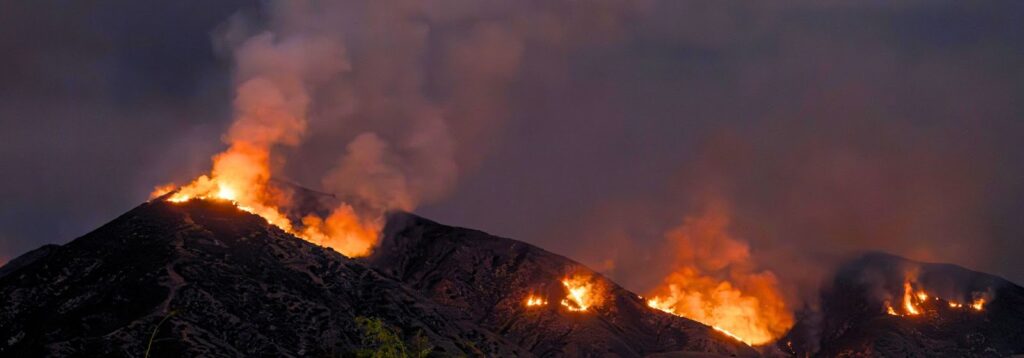
The wildfires in Los Angeles County, California have had devastating consequences for communities, economies, and ecosystems. Yet, amidst the chaos, a less visible threat emerges—foreign malign influencers (FMIs) exploiting these disasters to sow division and manipulate narratives. Foreign Malign Influence (FMI) refers to efforts by foreign governments or entities to manipulate, distort, or exploit information, narratives, or events to undermine public confidence, sway public opinion, or disrupt political, economic, or social stability in another country, often to achieve strategic or geopolitical objectives. Using our narrative intelligence technology, we’ve uncovered the tactics employed by these outlets to amplify divisive themes and distort the public discourse around these natural disasters.
Since the fires began on January 7, over 140 sources associated with FMIs have amplified 876 narrative items surrounding the California wildfires. These narratives range from expressions of international sympathy to pointed critiques of environmental policies. The variance in tone and focus reflects how foreign actors tailor narratives to serve their strategic goals.
Key themes include:
These narratives create a fragmented understanding of the crisis, shaping public perception along lines of division.
Foreign malign influencers are adept at identifying and amplifying wedge issues—topics that polarize public opinion. In the case of California wildfires, these wedge issues include:
1. Environmental Policy Debates
Narratives blaming environmental groups for wildfire mismanagement stoke division among policy advocates and critics. Headlines such as:
These headlines position environmental policies as a root cause of the wildfires, diverting attention from other contributing factors.
2. Economic Inequality
Focusing on the differential impact of wildfires on marginalized communities fuels resentment and distrust in recovery efforts. For example:
Such narratives emphasize systemic inequities, framing recovery efforts as biased against vulnerable populations.
3. Government Accountability
Critiques of California’s leadership and resource allocation erode public trust. Headlines like:
These narratives highlight perceived governmental failures, fostering skepticism about leadership during crises. The second piece in particular calls into question policy decisions like a 17 million dollar budget cut to the Los Angeles Fire Department.
4. Climate Change
Narratives that acknowledge climate factors but dismiss proactive solutions deepen divisions on environmental strategies. One example:
Headlines like the one above frame the California wildfires as inevitable outcomes of climate change while sidelining discussions of mitigation or adaptation strategies.
These narratives reflect the severity of the disaster and may be crafted to exacerbate existing tensions within American society regarding views on climate change.
Our narrative intelligence platform tracked the geographic origins and destinations of these narratives. Mumbai emerged as a central point of origin, with Los Angeles and Sacramento as primary destinations. This deliberate targeting of U.S. audiences underscores the global nature of disinformation campaigns and their ability to influence local crises.
Key geospatial insights:
The widespread reach of these narratives illustrates how FMIs use global media ecosystems to inject their messaging into the public sphere.
Understanding how foreign malign influencers exploit crises like wildfires is crucial for countering their impact. Our narrative intelligence technology analyzes geospatial data, themes, and sources, and provides a comprehensive view of these manipulative campaigns.
The California wildfires highlight the dual crises of environmental devastation and information warfare. Addressing the tangible impacts of wildfires requires robust disaster management strategies. But we must also combat the harm caused by malign actors perpetuating divisive narratives that leverage disasters like the California wildfires for their benefit.
Here’s how stakeholders can act:
By understanding how FMIs exploit natural disasters, we can protect not only our communities but also the integrity of our public discourse.
The battle against wildfires is fought on two fronts—one with water hoses and containment lines, the other in the realm of information. In this increasingly interconnected world, narrative intelligence is not just a tool but a necessity for navigating the complexities of modern crises.
To access the full Narrative Intelligence Brief and gain deeper insights into how foreign malign influencers exploit natural disasters, please provide your information below.
Stay informed with the latest narrative trends and ensure you’re equipped to navigate the complexities of today’s information landscape.